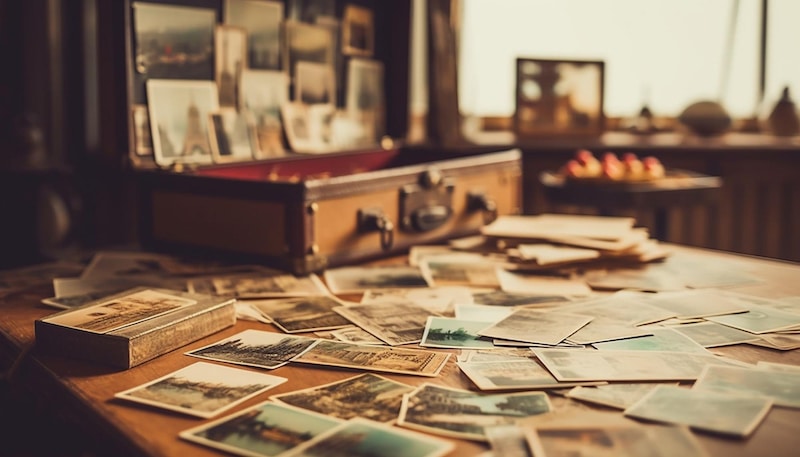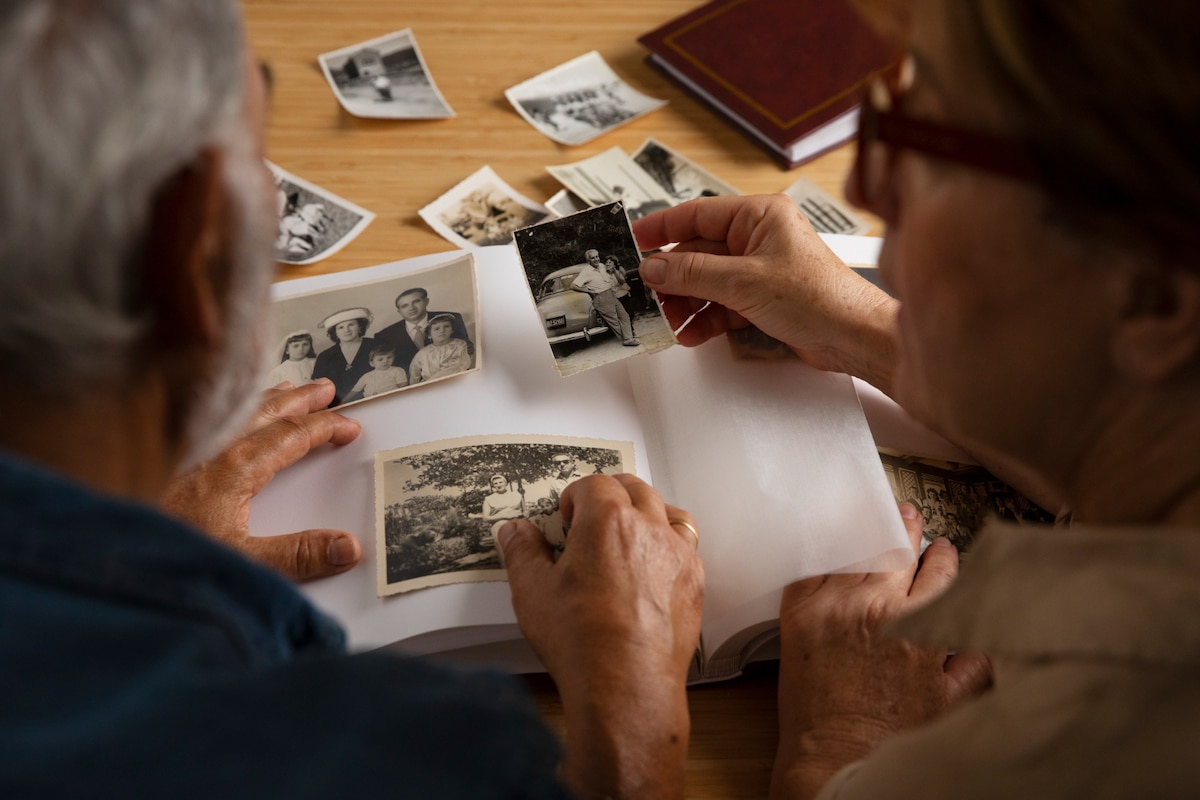Table of Contents
Preserving old photos is crucial for safeguarding our past and passing on our legacy. However, the effects of time can leave these treasures faded and damaged. This article explores the significance of restoring and rejuvenating old pictures. We’ll provide a comprehensive overview of the restoration of the old photo process, from evaluating photo conditions to using traditional and modern digital techniques.
Following these steps can bring your cherished memories back to life. Let’s embark on a transformative journey of unlocking the beauty of the past and creating a lasting legacy for future generations.
Preparing for Photo Restoration
Before embarking on the restoration journey, it’s essential to gather and organize your old image collection. This process will help you understand the scope of the repair work and ensure that no precious memories are overlooked. Here are some key steps to follow:
- Collect all the old images: Gather your old photos from various sources, such as albums, boxes, or even digital archives.
- Sort and categorize: Organize the images by themes, events, or individuals to make the restoration process more manageable.
- Create a digital backup: Scan your old photos to create a digital backup. This step will not only preserve the images but also provide a high-quality base for digital restoration.
Evaluating the Condition of the Photos
Once you have gathered your print selection, it’s time to assess the condition of each photo. This evaluation will help you identify specific issues needing attention during restoration. Consider the following factors:
- Fading and discoloration: Check for signs of color fading or discoloration caused by exposure to light, humidity, or chemical reactions.
- Physical damage: Look for tears, creases, scratches, or other physical damage that may have occurred over time.
- Mold and moisture damage: Inspect the prints for signs of mold, mildew, or water damage. These issues require special attention and care during restoration.
Taking Precautionary Measures to Protect the Originals
While restoring old photos, it’s crucial to protect the original prints from further damage. Implement the following precautionary measures:
- Handle with care: When handling the original prints, use clean, dry hands to avoid transferring oils, dirt, or moisture onto the delicate surface.
- Store in archival materials: Place the original photos in acid-free archival sleeves or albums to protect them from environmental elements. Avoid using adhesive materials that can damage images.
- Store in a controlled environment: Keep the photos in a cool, dry place, away from direct sunlight, extreme temperatures, and high humidity.
Gathering, organizing, evaluating, and protecting your old image slay the foundation for a successful process. These initial steps ensure that you clearly understand the requirements and safeguard the original prints for future generations. Now that you’ve prepared your collection, it’s time to dive into the restoration techniques to breathe new life into your cherished memories.
Traditional Photo Restoration Techniques
When it comes to old photo repair, traditional techniques play a vital role in bringing them back to their former glory. These methods involve hands-on processes and attention to detail. Let’s explore the fundamental techniques used to restore old photos:
| Cleaning and Dusting Photos | Use a soft brush or microfiber cloth to remove dust particles gently. Employ compressed air for stubborn debris. |
| Repairing Tears, Creases, and Scratches | Mend tears with acid-free archival tape or repair tissue. Flatten creases using blotting paper and pressure. Address deep scratches through professional or digital restoration. |
| Removing Stains, Spots, and Discoloration | Spot clean with a mild cleaning solution and gentle blotting. Consult a professional conservator for extreme discoloration. |
These traditional techniques for fixing old photographs encompass cleaning, repairing tears and scratches, eliminating stains and discoloration, and enhancing the overall image clearer.
Following these steps can bring new life to your cherished memories. The next section explores modern digital tools and techniques that further elevate the restoration process.
Modern Digital Tools and Techniques
Scanning the Old Photos for Digital Restoration
To embark on the digital restoration journey, the first step is to scan your old prints.
Scanning converts the physical prints into digital files, providing a solid foundation for the restoration process. Use a high-resolution scanner to capture as much detail as possible, ensuring accurate color representation and clarity.

Introduction to Photo Editing Software and Applications
In the realm of digital rehabilitation, photo editing software plays a crucial role in bringing old photos back to life. One such powerful tool is Luminar Neo, a comprehensive image editing software developed by Skylum. Luminar Neo offers a range of features and tools specifically designed to simplify and enhance the restoration process.
Its advanced AI-powered tools, such as content-aware fill and object removal, allow you to seamlessly repair damaged old photos, remove unwanted elements, and reconstruct missing parts. A User-friendly interface and powerful tools make it an excellent choice for both beginners and experienced photographers seeking to restore old photos.
Understanding Essential Tools and Features for Restoration
Once you have chosen your preferred photo editing software, it’s crucial to familiarize yourself with the essential tools and features for photo restoration. These include:
- Selection and masking tools: Precisely select and isolate areas for targeted adjustments and repairs.
- Clone stamp and healing brush: Remove blemishes, scratches, and imperfections by seamlessly blending pixels.
- Tone and color adjustments: Fine-tune brightness, contrast, color balance, and saturation to restore the photo’s original vibrancy.
- Noise reduction and sharpening: Reduce digital noise and enhance sharpness to improve overall image quality.
Step-by-Step Process of Restoring an Old Photo Digitally
To restore an old photo digitally, follow these general steps:
- Import the scanned picture into your chosen photo editing software.
- Use appropriate tools to assess and address specific issues such as tears, scratches, stains, and discoloration.
- Perform overall adjustments to enhance clarity, brightness, and color accuracy.
- Save the restored shot in a suitable format, considering the intended use and future preservation.
By utilizing modern digital tools and techniques, such as Luminar Neo and other photo editing software, you can efficiently restore old photos and bring them back to their original splendor. These tools provide the necessary power and flexibility to repair damages, correct colors, and enhance overall image quality. Now, equipped with this knowledge, let’s dive into the step-by-step restoration process and witness the magic of digital transformation.
Additional Tips and Tricks
- Retouching Portraits and Removing Imperfections. Enhance portraits by reducing wrinkles, blemishes, and uneven skin tones. Brighten and sharpen eyes for added vitality. Whiten teeth to restore a radiant smile.
- Artistic Filters and Effects for Creative Restoration. Add vintage charm with film-inspired effects. Apply textures and overlays for depth. Experiment with color grading to set the mood.
- Enhancing Composition and Framing Through Cropping. Follow the rule of thirds for balanced compositions. Remove distractions and experiment with aspect ratios for visual appeal.
- Experimenting with Black and White Conversions. Create timeless aesthetics by converting to black and white. Adjust contrast, emphasize textures, and apply filter effects for added character.
These additional tips and tricks expand the possibilities for your photo restoration journey. Retouch portraits, apply artistic effects, enhance composition through cropping, and explore black-and-white conversions to elevate your restored photos.
Let your creativity flourish as you bring old memories back to life with these techniques and tools, including Luminar Neo.
Conclusion
Restoring old pictures brings immense joy as faded images regain vibrancy and cherished memories come alive, connecting us to our past and preserving our heritage.
Throughout this article, we explored the steps of preparing for image restoration, traditional and digital restoration techniques, and additional tips for enhancing old photos.
Begin your photo restoration journey today, preserving and reviving precious memories to strengthen family bonds and gain a deeper understanding of your own identity. Embrace the transformative power of old picture repair and cherish the joy it brings.


